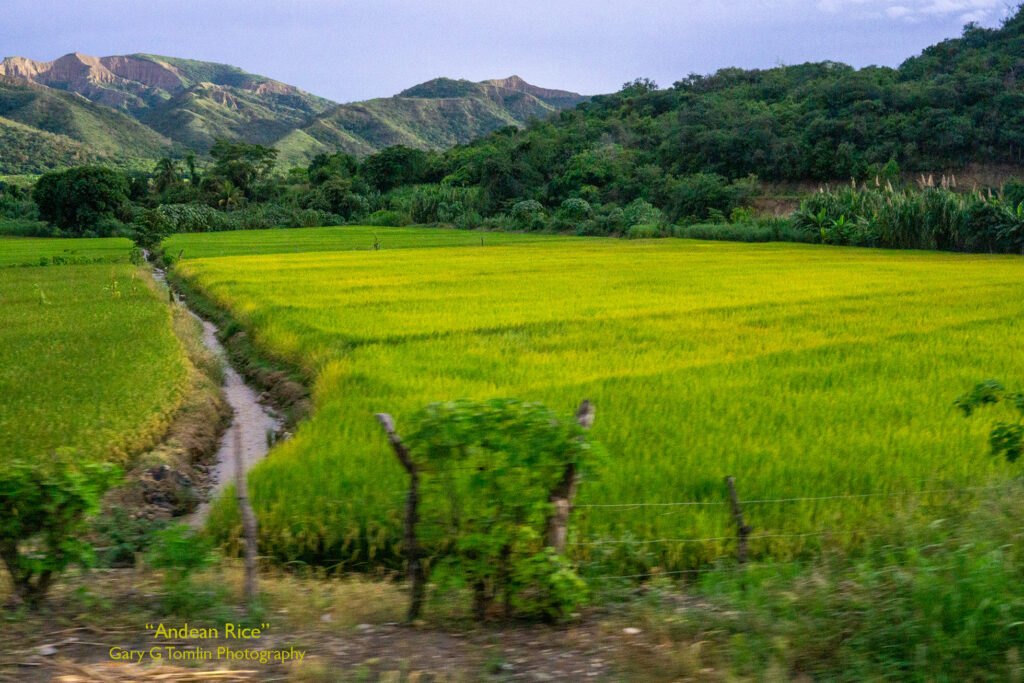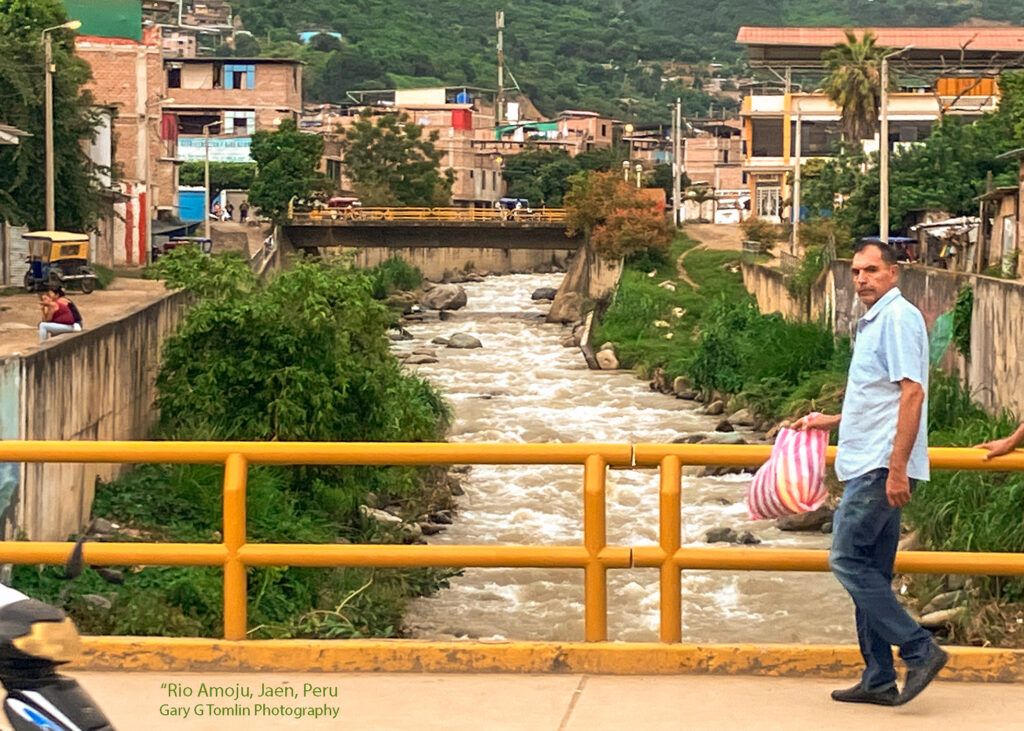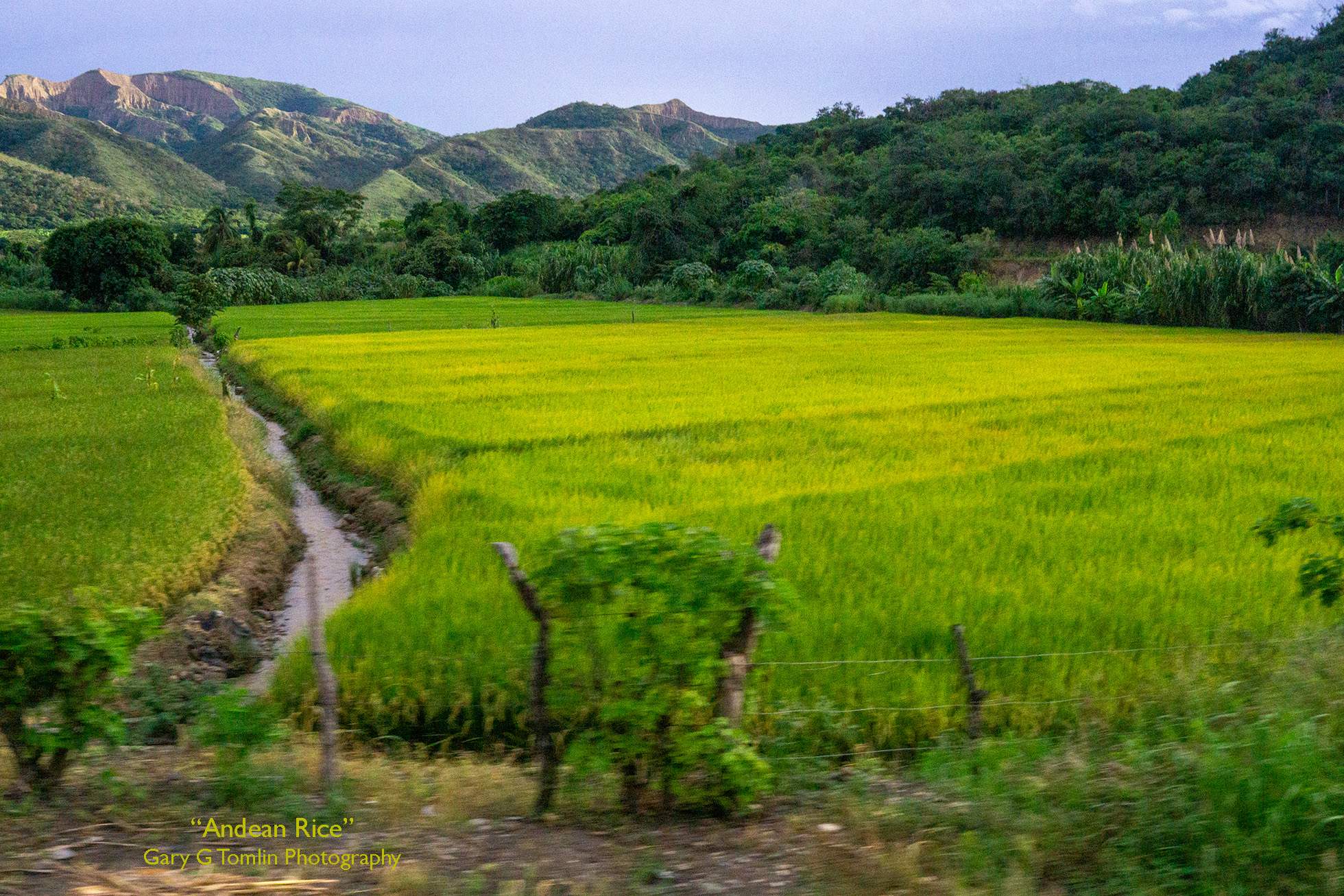by Gary Tomlin

High Andes, Peru — For this adventure, I planned to enter the Amazon watershed at the city of Yurimanguas, Peru, where there’s a port on the Huallaga River. I went into it with only a sketchy idea of how I was going to get there. Part of type-two adventure is in figuring out these unknowns on the fly.
A bus route starts in the southern Ecuadorian city of Loja, and ends in the Peruvian city of Jeán.
I rode that bus for 12-hours down the spine in the Andes, across the international border to the to the end of the route. It was fabulously beautiful mountain drive. Travel was slowed by road damage caused by landslides and washouts.
The drivers have an assistant who collects fares, loads and unloads the passengers’ baggage and generally does whatever needs to be done to keep the trip moving. I call them swampers.
In some places, when the bus stops, vendors will jump on and sell snacks and drinks.
People aren’t particularly friendly on the buses and they stay to themselves.
The seats are big and comfortable. You have only a side view out the window, so it’s like looking frame by frame, in fast motion, as the scenery speeds by.
After four hours we stopped for lunch at the bus terminal in Zumba. It’s the last Ecuadorian city.
Just a couple of miles before we got to Peru, we were stopped by a pile of mud in the road. Our swamper had to put on his rubber boots, take off his uniform shirt and move the mud off the road with a short-handle shovel.
Immigration was very slow on both sides of the border, but I think it was because their computers are slow. They didn’t hassle me in any way, and I got a 30-day visa.

From the border it’s 150 km to the city of Jeán. This is the dead spot in the itinerary. I had not worked out how I was going to get past Jeán, I didn’t know when I would arrive, so I didn’t reserve a room. I would have to work my way through it when I got there.
The highway stayed rural and unpopulated and followed a river cut the first couple hours. Then the river switched to meandering flow and wallowed out a big luscious valley. That created an agriculture opportunity and the valley was filled with rice patties and coffee trees. All very pretty and green.
People seem happy, certainly in my dealings everyone was friendly but also seeing them living their lives with a smile.
It was after dark when we got to Jeán, The bus parked in a secure parking lot where the driver and swamper could get some sleep and drive back to Loja in the morning.
Had this been a regular bus terminal, there would have been basic services like food and Internet. I could have loaded Expedia and found a suitable room and reserved it. Then I would be able to tell a driver where I wanted to go.

A cavalry of three-wheel motorcycles with a passenger cart called tuktuks converged on the disembarking passengers. They are the Peruvian method for public transport. I wanted to go to a hotel, but I didn’t know which one, or how to tell the driver. It was frustrating non-communication. “Donde. Bueno. Hotel. Por favor.” got us rolling. Which is some weak form of, “go to a good hotel, please.”
Maps wouldn’t download. My compass was buried. I couldn’t get a direction, or see any recognizable landmarks. I couldn’t orientate myself in this city. We were tuk tuk tuking along, and I was thinking of all the different ways this could go wrong. Starting with what might be the driver’s definition of, “good hotel.”
Nothing went wrong. He was a good driver, and he took me to a hotel that was in league with something I would have picked, and that’s as close to stress as I got. The unknown transportation component worked out just fine without any difficult effort.
In the morning I got a tuktuk and communicated that I wanted to get shared taxi too Chachapoya. He took me to the terminal. There is a shared taxi every hour starting at 4 am. It’s normally a four hour drive.
The next leg is equally unknown and unplanned, but my confidence is higher.
# 30 #


